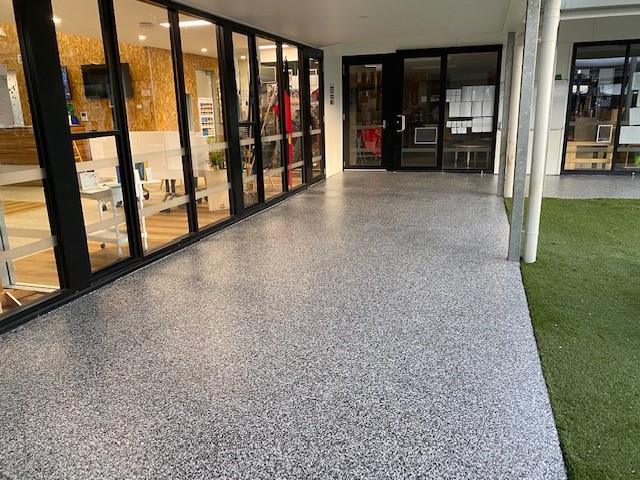Top-Rated Welding Inspection Service for Manufacturing Facilities
Top-Rated Welding Inspection Service for Manufacturing Facilities
Blog Article
Ultimate Guide to Installing Sturdy Epoxy Floors in Residential Spaces
When it involves changing household spaces with sturdy epoxy floors, a methodical technique is key. From picking the appropriate epoxy floor covering system to carefully preparing the surface area and implementing a remarkable application, every action plays a critical function in making sure a lasting and visually attractive outcome. There's one facet usually neglected that can significantly affect the durability and quality of the epoxy floor. By resolving this essential aspect beforehand, you can secure your investment and enjoy a smooth epoxy flooring that stands the test of time.
Selecting the Right Epoxy Floor Covering System
Choosing the appropriate epoxy flooring system is a vital action in ensuring longevity and performance in residential rooms. Epoxy floor covering offers longevity, very easy upkeep, and visual appeal, making it a popular option for residential applications. When selecting an epoxy system, factors such as the sort of epoxy, degree of toughness called for, style choices, and spending plan restraints should be thought about.
There are various kinds of epoxy floor covering systems available, including water-based epoxy, solvent-based epoxy, and 100% strong epoxy. 100% strong epoxy is the most resilient alternative, suitable for high-traffic areas in domestic rooms.

Preparing Your Residential Room
When considering the installment of resilient epoxy floorings in household spaces, adequate preparation of the area is basic to making certain a long-lasting and successful application. The initial step in preparing your household area for epoxy flooring is to thoroughly cleanse the surface.
Next, it is important to fix any kind of cracks, holes, or flaws in the flooring. These should be loaded and leveled to develop a smooth and even surface for the epoxy finish to be used. In addition, look for dampness problems as excessive wetness can create the epoxy to bubble or peel. Deal with any kind of moisture problems before proceeding with the setup.
Last but not least, ensure correct ventilation in the area during the installment process to allow the epoxy fumes to dissipate. Ample prep work of the house sets the foundation for an effective epoxy flooring application.
Using Epoxy Coating
To start the process of using epoxy finishing, thoroughly mix the epoxy material and hardener according to the producer's directions. It is essential to follow the advised blending ratios specifically to ensure the epoxy treatments properly and accomplishes optimum longevity. Once the epoxy components are mixed, put the blend onto the prepared floor surface area in a bow pattern.
Utilizing a roller with a medium-nap cover, spread the epoxy evenly over the flooring, operating in manageable areas to avoid the epoxy from drying out too quickly. Make sure to back-roll the used epoxy to remove any type of puddles or irregular areas, guaranteeing a regular and smooth surface.

Enable the epoxy coating to cure according to the manufacturer's guidelines prior to continuing with any kind of more steps to ensure a sturdy and lasting finish.
Making Certain Appropriate Curing and Drying Out
Effective curing and drying procedures are necessary to accomplish the preferred sturdiness and longevity of epoxy floorings in domestic spaces. Proper healing involves offering the epoxy finish sufficient time to set and bond entirely to the substratum. This procedure usually takes around 24 to 72 hours, depending upon the particular item made use of and environmental problems. Throughout this duration, it is important to restrict foot web traffic and prevent positioning hefty things on the floor to avoid any type of damage or flaws.
Furthermore, making sure adequate air flow in the room find here is vital for the drying out procedure. Appropriate air movement aids the epoxy layer to heal uniformly and stops any kind of issues like gurgling or irregular drying out. Keeping consistent temperature degrees within the curing location is likewise crucial, as extreme temperature levels can adversely affect the treating process. It is suggested to adhere to the maker's guidelines for treating and drying out times to ensure optimal results and make best use visite site of the resilience of the epoxy flooring in household setups.

Expanding and preserving Epoxy Flooring Life-span
Appropriate upkeep practices play an important function in expanding the lifespan of epoxy floorings in household settings. Regular cleansing is crucial to avoid dust and debris from damaging the surface area of the epoxy flooring.
To even more secure the epoxy floor, consider applying a new topcoat every few years, particularly in high-traffic locations. By following these upkeep ideas, property owners can ensure their epoxy floors stay resilient and aesthetically appealing for years to come (Welding Inspection Service).
Conclusion
To conclude, installing durable epoxy floors in residential rooms requires careful factor to consider of the epoxy flooring system, complete preparation of the space, correct application of the epoxy coating, and ensuring proper treating and drying out processes. By complying with these actions diligently, house owners can attain a visually appealing and long-lasting epoxy flooring that improves the resilience and looks of their home.
When it comes to transforming domestic spaces with sturdy epoxy floors, a methodical technique is vital. When picking an epoxy system, aspects such as the kind of epoxy, degree of sturdiness required, style preferences, and spending plan restrictions have to be considered.
There are different kinds of epoxy flooring systems offered, including water-based epoxy, solvent-based epoxy, and 100% solid epoxy.When considering the installation of durable epoxy floorings in domestic rooms, ample prep work of the area is basic to ensuring a successful and lasting application.To Discover More start the procedure of applying epoxy layer, extensively mix the epoxy resin and hardener according to the producer's instructions.
Report this page